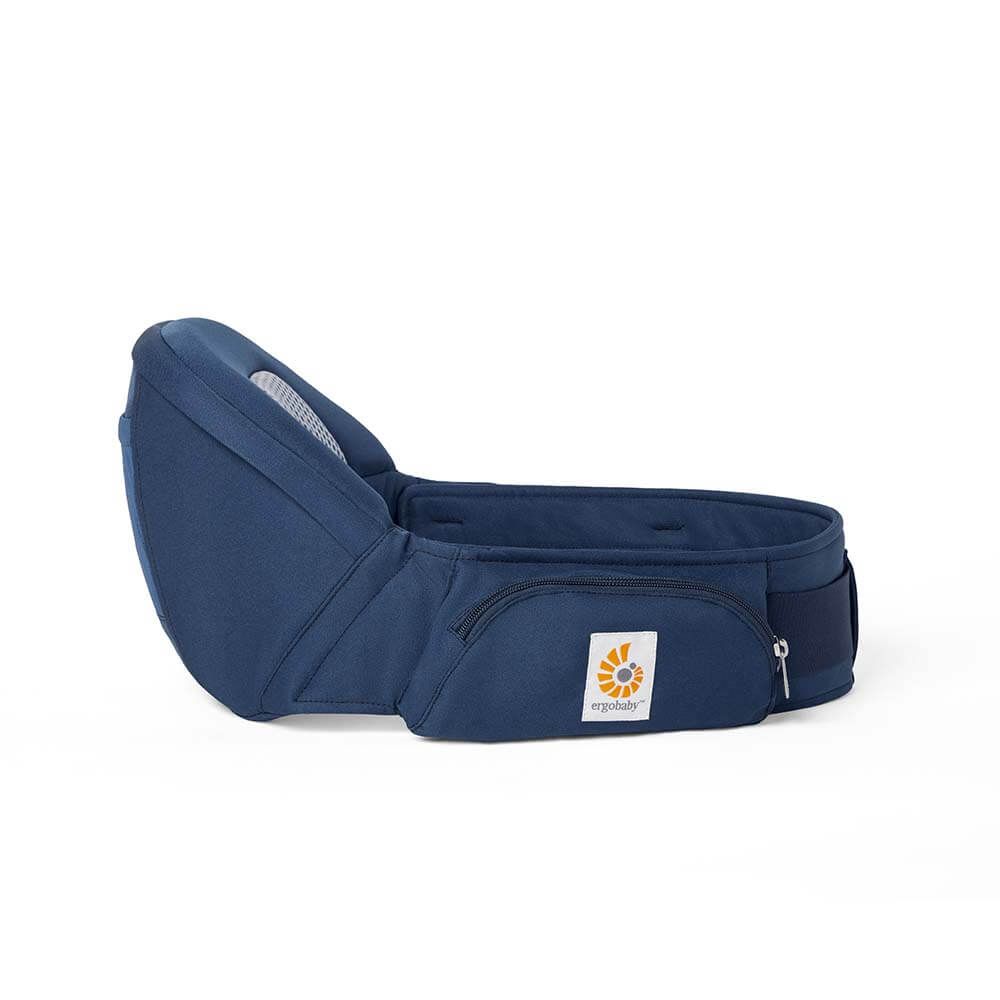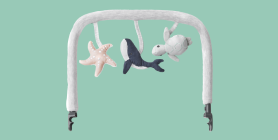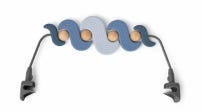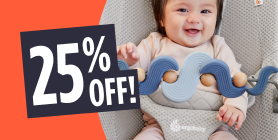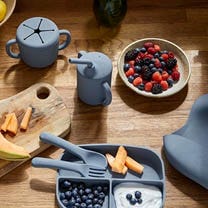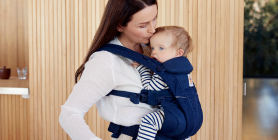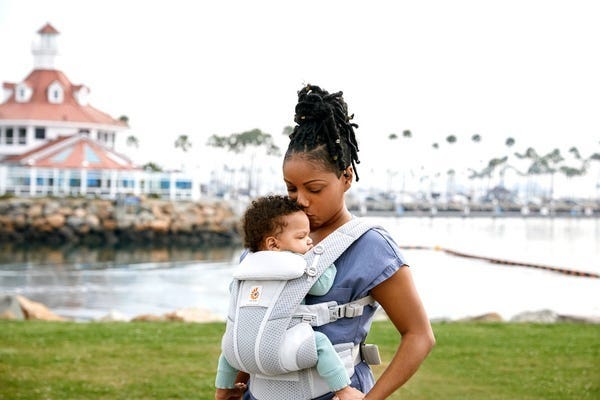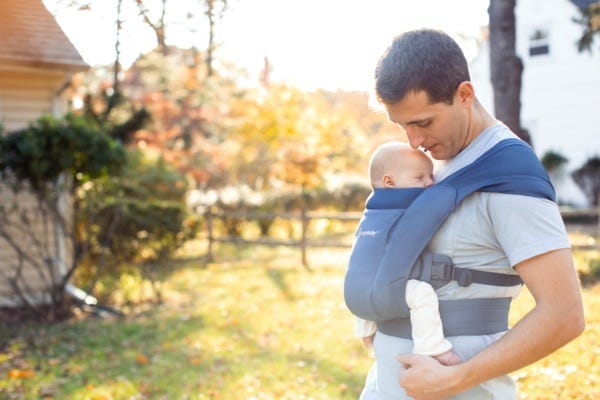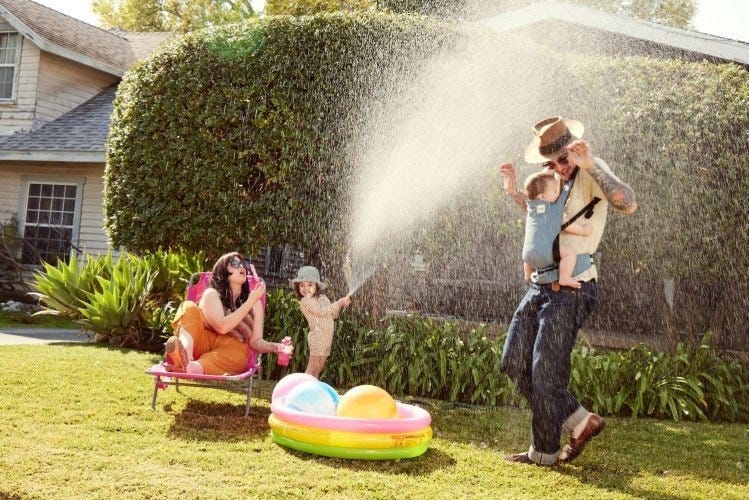There is a deeply caring quality reflected in Ina May Gaskin’s life as a certified professional midwife for over 35 years, as an author, educator, community member, and the mother of three home-birthed children. She brings her life’s work and experience to the 340 pages of this rich resource on breastfeeding. Like her book, Spiritual Midwifery, Ina May’s Guide to Breastfeeding is destined to be a classic. Word is bound to spread quickly to every mother interested in “everything you need to know to make breastfeeding a joyful, natural, and richly fulfilling experience for both you and your baby.” The contents of this book bring insights into the personal journey of becoming a family, from how your birth choices determine the quality of your breastfeeding experience, to the advantages of delaying cutting the umbilical cord. There are lists of Baby-Friendly hospitals, herbs to avoid, and how to handle sick and hospitalized babies, and colds, diarrhea, or reflux. The mystery and magic of what to expect your first three months together with your newborn is explored, along with safety tips and the benefits of wearing your baby. Ina May also offers encouragement and her own understanding of our social dynamics, and ways we are evolving towards a more global vision, creating a breastfeeding culture. Her tolerance of “nipplephobia” has ended, as her sense of humor and gentle guidance flourishes. “Please don’t listen to anyone who tries to put you or your baby on a schedule. Clocks have nothing to do with this bond between breast and babies. Time-honored ways of calming fussy babies include feeding, holding, rocking, swaddling, walking (outside when possible), singing, making other soothing sounds. Do what you can to replicate the atmosphere of your womb—the rhythmic movement, the swooshing sounds, and the feeling of being held tightly.” “Nature didn’t intend for mothers and their babies to be separated from each other at birth.” It seems some births are dictated by conventions that have strayed from what is actually beneficial to the birth experience being empowering and supportive of bonding. Even a slight delay in clamping the umbilical cord was proven to alleviate bleeding in the brain and infections in infants born before 32 weeks, in studies by Judy Mercer, a U.S. nurse-midwife and professor of nursing. Clamping the umbilical cord later can also prevent anemia in your baby by providing “more blood that will be squeezed into her body -- as much as thirty percent of her blood volume.” Skin-to-skin contact in the first hour after birth has been proven to enhance a baby’s well being in terms of less crying, body temperature, more balanced blood sugar levels after 90 minutes, and a beneficial mixture of hormones that flood both mother and baby when they touch and breathe each other’s breath, heart-to-heart. “In fact, immediate separation between mother and baby is one of the most efficient ways to make the initiation of breastfeeding more difficult.” A few interesting facts from the book that are not well known may relieve some potential worry for new parents: babies are not always born hungry, as their bodies are equipped at birth with stored energy in their liver. This allows them to survive well for two or three days before they actually become hungry. It is also common for babies to lose some weight their first few days of life as their system expels unnecessary fluids. Another potentially big surprise Ina May forewarns of is the demonstration of fully functioning baby lungs and vocal cords. Your silent newborn, cooing and gently nuzzling, perhaps, during your first day together, may begin to experiment with her vocal range, at decibels that challenge the mind and nerves, come days two and three. Ina May encourages parents to breathe, relax, and find their center for these times, so the comfort can spread amongst you all. There are skills you can learn the first week after birth, in a few brief sections dedicated to: burping, swaddling, hand expression of breast milk, dealing with babies who “fall asleep at the meal,” or refuse the breast, how to handle nipple shields, caring for your own needs and feelings, engorgement, sore nipples, tongue-tied babies, co-sleeping and safety concerns. There are tips on how to smooth potentially new rough edges that can be discovered from lack of sleep, and lack of support. Ina May offers ways of alleviating these disturbances, and further potential issues that are best given attention sooner than later, such as postpartum depression, dealing with fathers’ feelings, your sex life, and breastfeeding as birth control. She also gets into teething, biting, teaching nursing manners, starting solids, birth control’s effect on breastfeeding, foods to offer and avoid, nursing twins, and externally imposed obstacles to breastfeeding. Once work calls you outside the home, if it does, there are things to consider, so you can meet your baby’s and your needs most smoothly and comfortably. Discussions range from Breast-pump basics, to manual and electric pumps, potential challenges while pumping, storing milk, taste and safety concerns, and how to buy toxin-free products besides plastics with known carcinogens in them. (Healthy Child Healthy World has great tips and guidance on this topic, www.healthychild.org) Ina May strongly promotes our supporting the establishment and expansion of Baby-Friendly hospitals worldwide. The Philippines, Brazil, Thailand, Mexico, tiny Ecuador, Nigeria, Iran, Turkey, Tunisia, Malaysia, and Egypt are all surpassing the U.S. in their number of Baby-Friendly hospitals. Baby-Friendly hospitals support breastfeeding as a superior form of nutrition for babies and discourage corporate agendas to sell infant formula. Baby-Friendly hospitals are far more per capita in these other countries than the U.S., because the U.S. hospitals have been catering to infant formula companies who orchestrate their industry for profits over true health care and the promotion of breastfeeding. There are no corporate profits in breastfeeding, only optimal health. Ina May encourages us to raise the bar and grow the awareness and enthusiastic support of breastfeeding as is vital and natural, and stop the antagonistic behavior that some breastfeeding mothers have encountered. In creating a breastfeeding culture, Ina May invites us all to realize the roots of our well being are simple. “…newborns’ nervous systems are programmed in every way imaginable to be attracted to breasts. …Even our sense of hearing leads us to the breast, since it is located so near our mother’s beating heart, our place of security. We must see breasts and nipples wholesomely – not in a furtive way, but naturally. Mother’s milk is soul food for babies. The babies of the world need a lot more soul food.” Ina May’s final acknowledgments and heartfelt thanks extend to many generations of mentors, friends, family, and her parents, “Ruth and Talford Middleton, who raised me to know that my body had the capacity to function perfectly – even if other people didn’t think that possible. What a priceless gift that has been throughout my life!” She also expresses her gratitude to, “My midwives, for protecting me and my last three babies so beautifully during the magic time after their births.”
Links: For finding local breastfeeding support at La Leche League website: http://www.llli.org/webindex.html World Breastfeeding Week: www.lllusa.org/wbw La Leche League's Mission is to help mothers worldwide to breastfeed through mother-to-mother support, encouragement, information, and education, and to promote a better understanding of breastfeeding as an important element in the healthy development of the baby and mother. Books on Nutrition from LLLI for mother and children: http://www.llli.org/bec/additnutrition.html Breast feeding studies show significant health benefits, and a huge savings in money as well: http://www.birthrevolution.org/apps/videos/videos/show/11243826-breast-feeding-saves-lives-money Dr. Alan Green, M.D.: “Baby food is a myth. Commercial baby food was an invention of 20th century corporations.” http://healthychild.org/blog/comments/new_book_-_feeding_baby_green/ Storing breast milk tips from Healthy Child Healthy World: http://healthychild.org/blog/comments/tip_70_storing_babys_milk/
Emotional Benefits of Getting Outside
Spending time in nature with your baby can strengthen the bond between you. The simple act of holding your baby close, feeling their warmth, and sharing new experiences together can create strong emotional connections. It’s also a wonderful way to reduce stress and improve your mood. When my littles were extra fussy, I’d take a walk around the neighborhood. Even though I don't live in an area with trails and surrounded by nature, simply behind outside changed everything. A little vitamin D does wonders!
Cognitive Development
Nature is a sensory wonderland for babies. The different sights, sounds, and smells can stimulate your baby’s senses and promote cognitive development. Watching leaves rustle, hearing birds chirp, and feeling the texture of a tree bark can all contribute to their learning and development.
All About Baby Carriers for Nature Adventures
Choosing the Right Baby Carrier
When it comes to selecting the best baby carrier for summer adventures, there are several options to consider.
Types of Baby Carriers:
- Wraps: Perfect for newborns, providing a snug and secure fit.
- Slings: Ideal for quick and easy use, offering good ventilation.
- Soft Structured Carriers: Versatile and comfortable for both parent and baby, suitable for longer trips.
Factors to Consider:
- Baby’s Age and Weight: Ensure the carrier is appropriate for your baby’s size and weight. For example, Ergobaby’s Embrace Newborn Carrier is perfect for the fourth trimester where baby is small and you’re looking for an easy way to stay close. As they grow, you’ll want to upgrade to an all-position carrier that’s meant for growing babies.
- Parent’s Comfort and Ergonomics: Look for carriers with padded shoulder straps and lumbar support if you’re planning on longer outings.
- Ease of Use: Choose a carrier that is easy to put on and take off.
- Climate and Breathability: Opt for carriers made of breathable fabrics to keep you and your baby cool in hot weather.
Safety Tips:
- Proper Positioning: Ensure your baby is seated correctly, with their legs in an "M" position and their head should be close enough to kiss.
- Checking for Wear and Tear: Regularly inspect your carrier for any signs of damage.
- Ensuring Adequate Support: Make sure the carrier provides proper support for your baby’s head and neck.
Exploring Nature with a Baby Carrier
Ideal Spots for a Nature Walk with Baby
- Parks and Gardens: Great for leisurely walks and picnics.
- Nature Trails and Forests: Perfect for more adventurous outings.
- Beaches and Lakesides: Wonderful for enjoying the water and sand, with the right carrier.
Activity Ideas
- Hiking: Enjoy a scenic hike with a hiking baby carrier that offers support and storage.
- Bird Watching: Use your carrier to keep your baby close while you explore and observe wildlife.
- Picnics: A carrier can free up your hands, making it easier to carry picnic supplies.


Advantages of Using Strollers for Nature Adventures
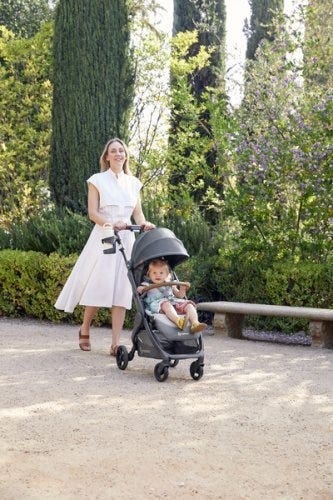

While baby carriers are fantastic for mobility and closeness, depending on the adventure of choice you might want to be a stroller along too.
There are a LOT of baby stroller options on the market. So we understand how confusing it can be to choose the one that’s right for your family. Not only are there a variety of brands, but a variety of strollers that serve different purposes.
There are a few types of strollers on the market:
- Full-sized stroller: This is typically the stroller parents thing of buying for all its versatility.
- Lightweight or umbrella stroller:These compact strollers are perfect for on-the-go adventures.
- Jogging stroller: Designed for parents who want to combine fitness with outdoor adventures.
- Double stroller: Designed for parents with multiple kids, especially twins.
- Car seat carrier: These strollers connect to a specific car seat. We don't typically recommend these as they can be unsafe for baby and uncomfortable for parents who are pushing.
Learn more about the types of strollers and which one would be best for you.
Benefits of Bringing a Stroller
- Storage Space for Gear: Ample room for carrying all your essentials like a diaper bag, beach toys and more.
- Shade and Weather Protection: Built-in canopies to shield your baby from the sun when they are lounging.
- Options: If you have more than one kid, you can stroll with one and carry the other. Or, if you’re getting warm or your little one is getting fussy, you can switch up their position from stroller to carrier or vice versa.
Safety Tips for Strollers
- Ensure your stroller is in good working condition. Make sure buckles are still buckling and that there are no rips or holes that could compromise your baby’s safety.
- Use sunshades or bug nets to protect your little one’s skin.
- Securing the baby properly: always buckle up your baby for safety even if you think they are old enough to go without the buckle.
Combining Baby Carriers and Strollers
For the ultimate flexibility, consider using both a baby carrier and a stroller on your outings.
Combining both options allows you to adapt to different situations. Use the carrier for more rugged trails and switch to the stroller for smoother paths or when your baby needs a nap.
Transition Tips
- Smooth Transitions: Plan stops where you can easily switch from carrier to stroller.
- Pack Light: Only bring essentials to make transitions easier.
Tips for a Successful Adventure
Planning Ahead
- Route Planning: Choose baby-friendly trails and parks. Check local mom groups or outdoor groups and get recommendations for the best outings for kids.
- Check Weather Conditions: Avoid extreme heat or unpredictable weather. Even with our most breathable carriers, when it’s hot, it’s hot. And having two bodies against each other in the heat will be naturally hot and sticky already.
- Packing Checklist: Include diapers, snacks, water, sunscreen, and a first-aid kit. These all-position carriers have storage pockets where you can fit some of the items easily!
- Stay Hydrated and Nourished: Pack healthy snacks to keep energy levels up and bring plenty of water for both you and baby.
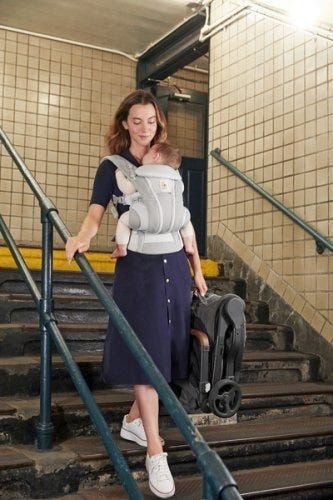

Summer adventures with your baby are a wonderful way to create lasting memories and enjoy the beauty of nature together. From baby carriers to strollers, Ergobaby products are designed to provide comfort and ease for both you and your little one. So, gear up, get outside, and explore the world with your baby by your side.
Ready to embark on your own summer adventures? Check out Ergobaby’s range of baby carriers and strollers to find the perfect match for your family’s needs. Visit our website today and start planning your next outdoor excursion!





